Stepping back and finding our place in this moment
Lessons throughout time, captured by David Hockney over the past 65 years.
We are in the midst of an alarming moment — as stories from those imprisoned at CECOT come into public view, as America’s would-be dictator's authoritarian aims are spouted daily, and as it seems that more and more of our institutions are failing to push back.
It is easy to feel like we are drowning in this moment, but it is also helpful to find a way back on to land, step back, and identify our place in time.
On Sunday, I had the chance to do so at the David Hockney 25 exhibit at the Fondation Louis Vuitton in Paris.
It was beautiful to see his work, to take in the breadth of all he has done, and to consider where — after all of that living — he landed as he put this exhibit together.
One of the first works on display was “We Two Boys Together Clinging.” From 1961, the painting is described, in English, as such:
We Two Boys Together Clinging is the first line of a Walt Whitman poem about homosexual love. Hearts are among the graffiti motifs that inspire the artist. Although nothing is explicit, everything said. What we see are two young men in each other's arms, their attraction symbolized by the lines and crosshatching bringing the bodes together. They suggest anthropomorphic stelae (statue-menhirs) of the European Neolithic age. The numbers are a code borrowed from Whitman: the initials of a name are replaced by its position in the alphabet, yet another way of saying something without saying. 4.2. is for pop star Cliff Richard, whom Hockney referred to as "Doll Boy"(D.B.).
A 1961 painting by a gay artist, referencing a queer poem from the 1850s, displayed in a 2025 exhibition.
Among the other earlier works displayed was this 1968 portrait, “Christopher Isherwood and Don Bachardy,“ another reminder of the broader time in which we exist.
Isherwood, on the right, produced queer work, like Whitman, that is ever-present in our world.
Most notably in this moment, Isherwood wrote The Berlin Stories, his collection of stories that became I Am a Camera and — currently playing in both London and New York City — Cabaret. A story of the rise of Nazism in Germany and how its rise began affecting the daily lives of Germans, it is an increasingly disturbing production each time I have seen it in recent years.
Here, however, Isherwood sat in California more than two decades after the war that followed had ended. The painting, in English, is described as such:
This painting of the writer Christopher Isherwood and his companion, the painter Don Bachardy, is one of the most representative of David Hockney's double portraits. Depicted frontally, its quasi-stillness broken only by the movement of Isherwood's head, for the young Hockney they symbolize the freedom of Californian society, where a male couple of different ages could be seen in a relationship that today would be described as "open."
A 1968 painting, featuring a queer couple in the 1960s, displayed in a 2025 exhibition.
These connected moments in pre-Stonewall history provide perspective to me in this alarming moment for queer people. It is, yet again, a reminder that we always have existed — and always will.
And, for Hockney, it was interesting to see how this man — born in 1937 in England — has moved through life given all he had seen.
Enter, the pandemic. This is how the exhibit detailed, in English, how he took on the start of Covid:
FOUR YEARS IN NORMANDY (2019-2023)
In 2020, confined to the Normandy village where he had bought a house, Hockney began sending iPad paintings to his friends to lift their spirits. Among these images, he drew daffodils along with the first mention of the phrase, Do remember, they can't cancel the spring.
In a continuation of this exercise in looking at his immediate surroundings, Hockney set himself the task of realizing 220 Norman views in 2020. The series, 220 for 2020, treats just a few hectares, where the artist found an infinite number of subjects, near and far. Here, once again, Hockney celebrates the subtleties of change, seasonal and daily, painting plants in all their states, using the iPad to revisit the same motif, thus renewing his work in a continual and rapid way. The selection of works shown here does not result in a unified cycle, but rather puts forward singular moments from across the seasons.
To see the result was a striking experience of his living of that mantra:
As we moved closer still to today, the most recent works on display stood out to me. They, too, were conscious efforts by Hockney to pull the past into the present — and the future. The pair of paintings were of a theme, as described, in English:
"LESS IS KNOWN THAN PEOPLE THINK"
Today, David Hockney lives in London, where he has recently completed paintings inspired by Edvard Munch and William Blake. After Munch: Less Is Known than People Think echoes a small drawing by the Norwegian master that he saw in a catalogue for a recent exhibition at the Museum Barberini in Potsdam, while the title comes from a 1998 New York Times article on the unknowable in science, which Hockney pinned up in his studio.
The second painting, After Blake: Less Is Known Than People Think, refers to that artist's illustrations for Dante's Divine Comedy. As always with Hockney, the two works deal with space, and have, according to him, a "more spiritual" dimension.
“After Munch: Less Is Known Than People Think” was painted in 2023:
“After Blake: Less Is Known Than People Think” was painted in 2024:
The two paintings — inspired by Blake’s 200-year-old illustrations and Munch’s roughly 100-year-old work — have a clear and unsubtle message — taken from a 1998 news article — for today’s moment.
“Less is known than people think.”
All of which brought us — as seemed appropriate for this grant exhibit — to today, to this year, and back to this artist, whose self-portraits were scattered throughout the exhibit.
It is titled, “Play Within a Play Within a Play and Me with a Cigarette,“ and the 2025 painting is described, in English, as such:
Hockney has depicted himself dressed in a tweed suit, sitting in his garden. On the painter's lap we see the collage of the work in progress, daffodils announcing the arrival of spring.
In short: Do remember, they can't cancel the spring.
It was a powerful exhibit that took me through time, with reminders of queer history; situated me in the present; and opened up my thinking to the possibilities for the future.
This is a moment of crisis, but it our moment of crisis, and we can and must act accordingly — always maintaining the humility to acknowledge the unknown and never forgetting the reality that spring will come again.
The David Hockney 25 exhibit is on display through the end of August, and I strongly recommend it to anyone who can see it.



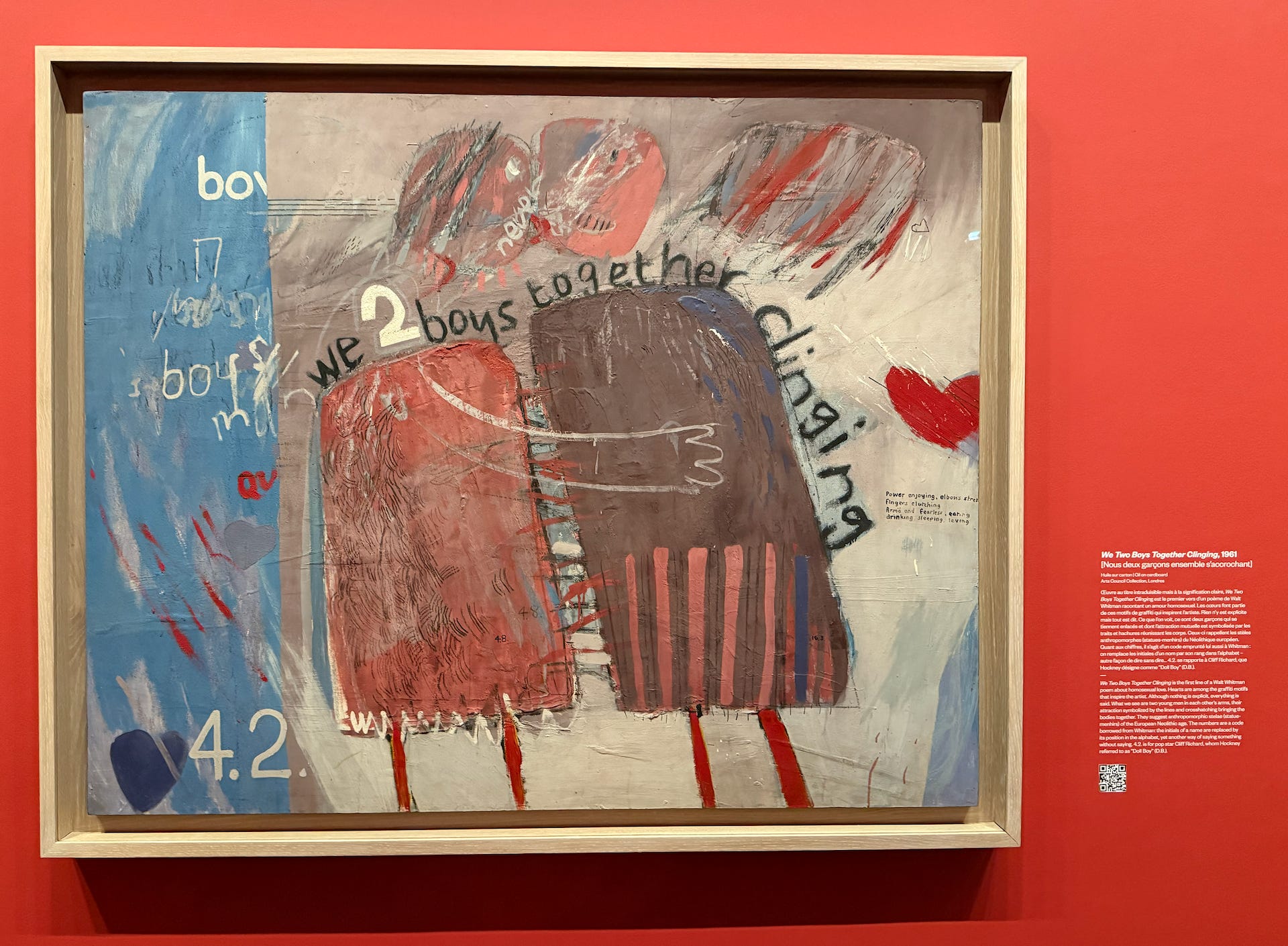
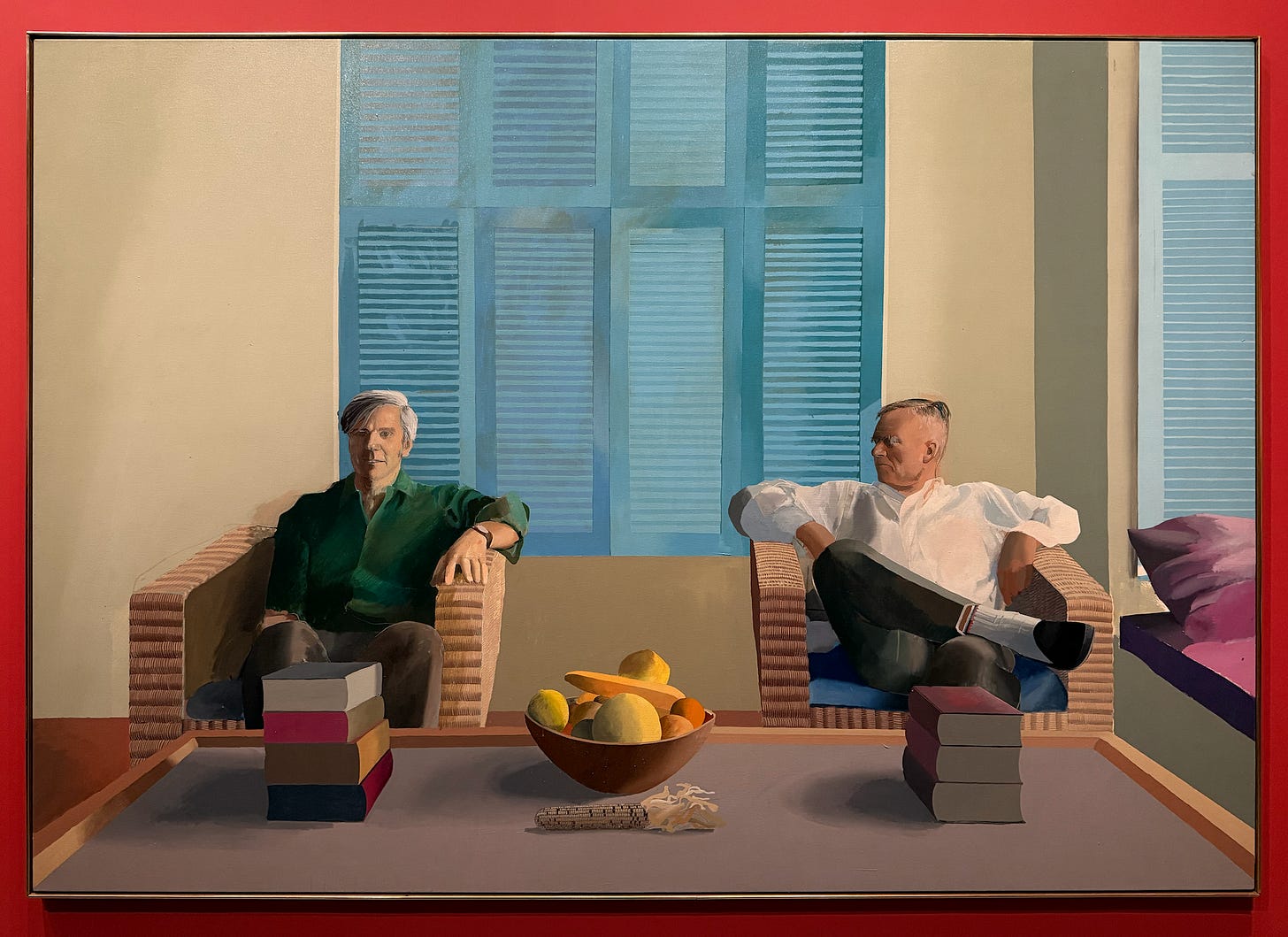
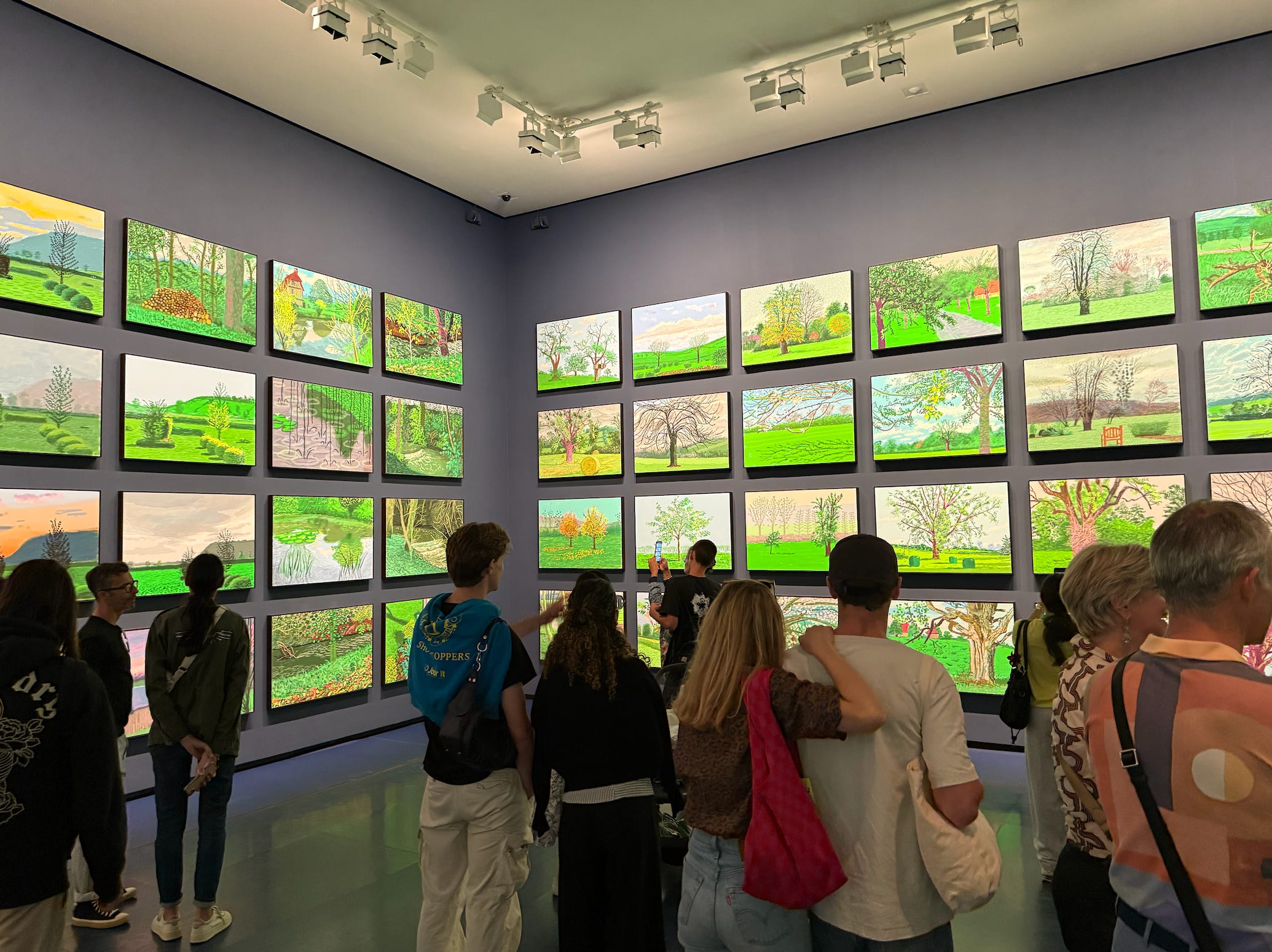
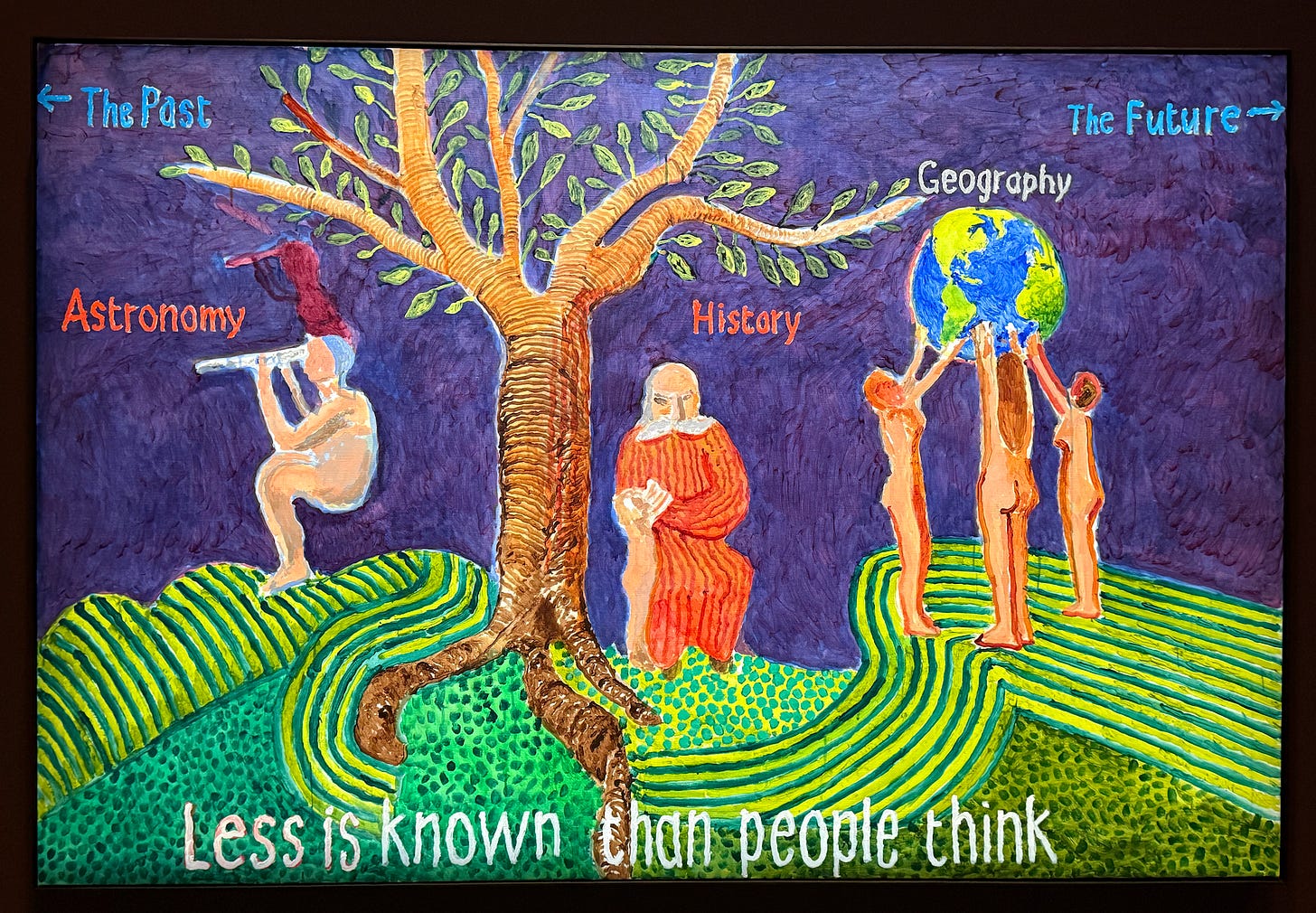
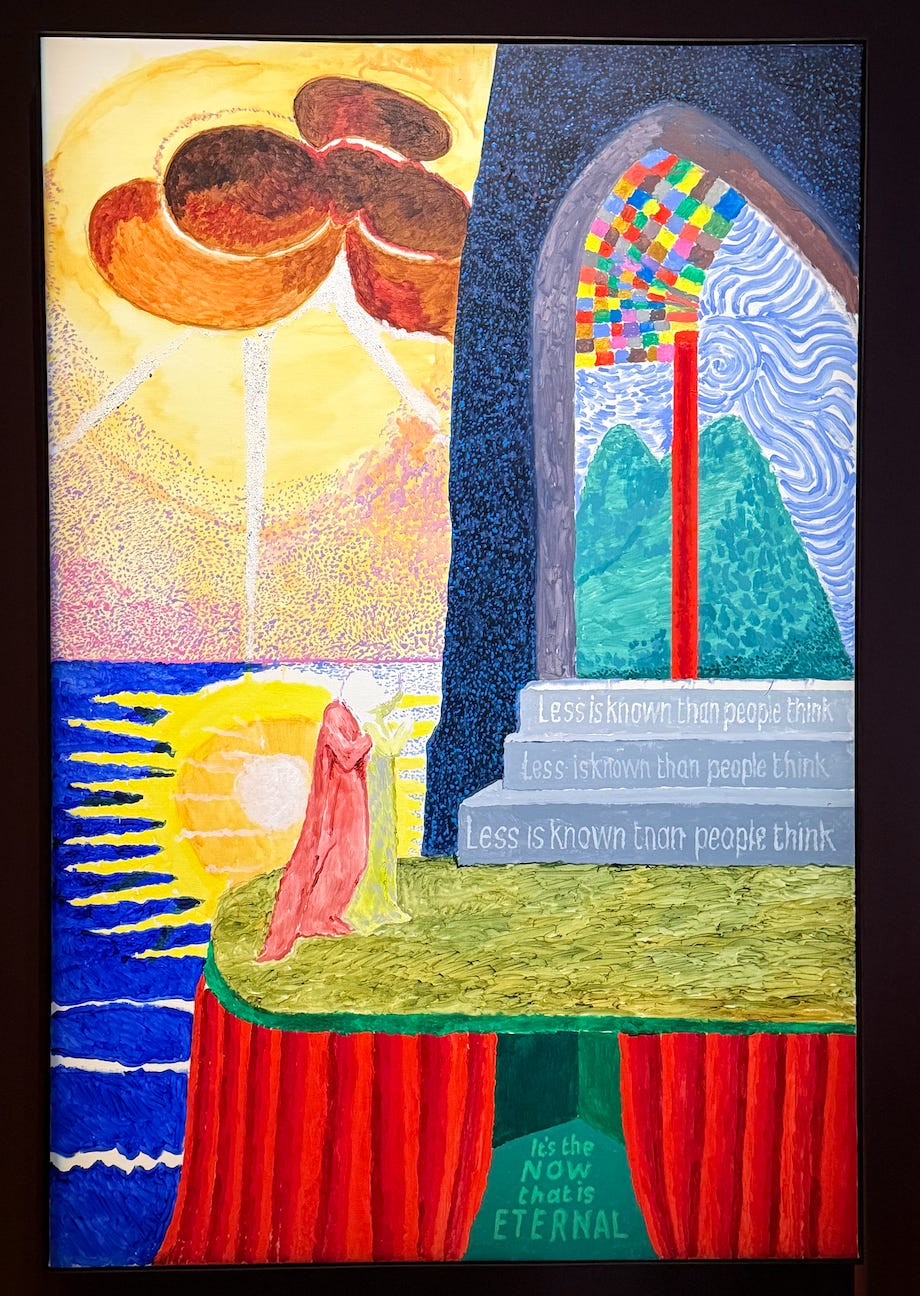
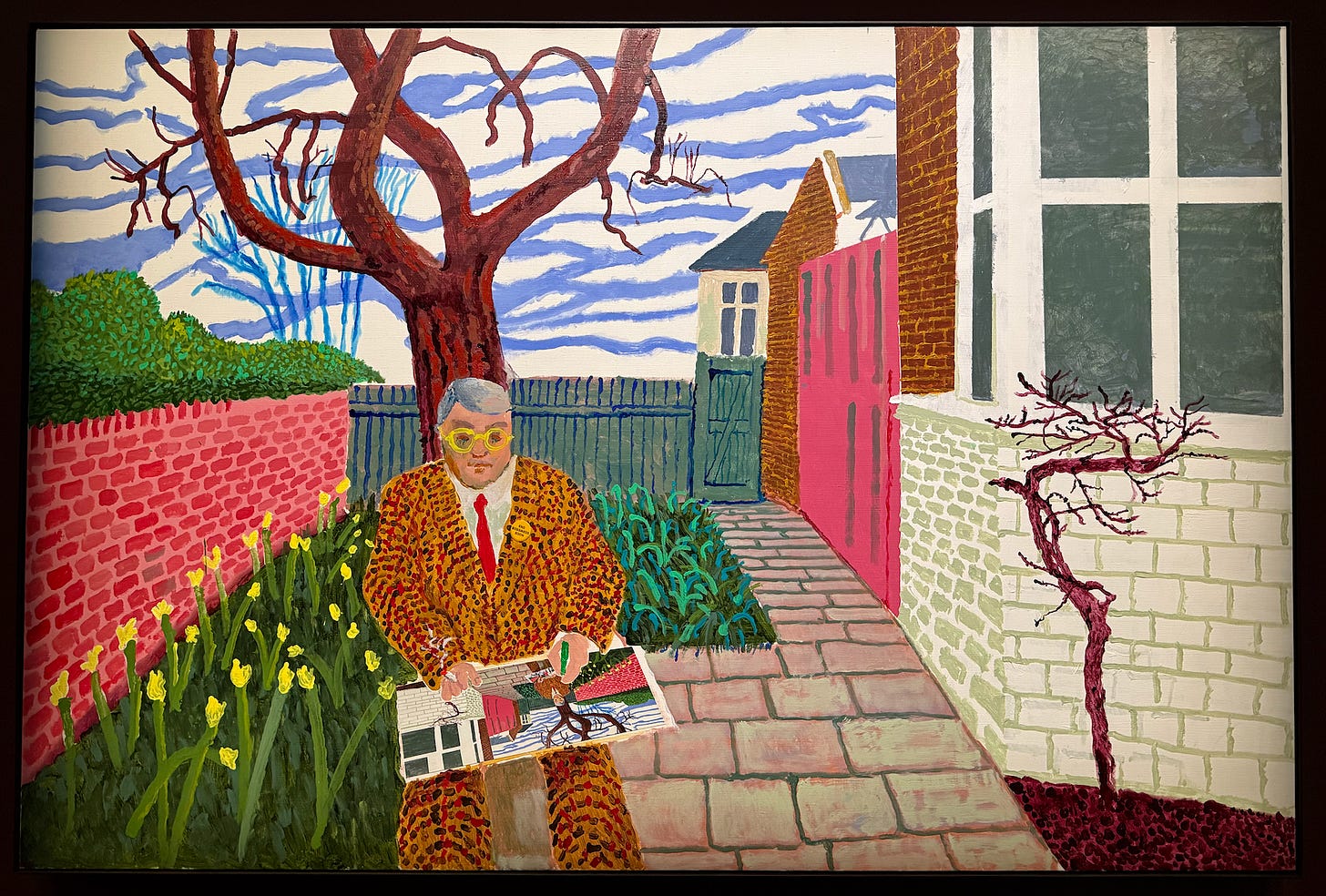
Fascinating, beautiful art work along with lovely, cryptic poetry. This was an amazing read this morning Chris. You were a very lucky duck to be able to attend such wonderful event. Thank you for sharing it with us, and will reStack ASAP 🙏
This essay was a beautiful and unexpected start to my morning. Thank you!